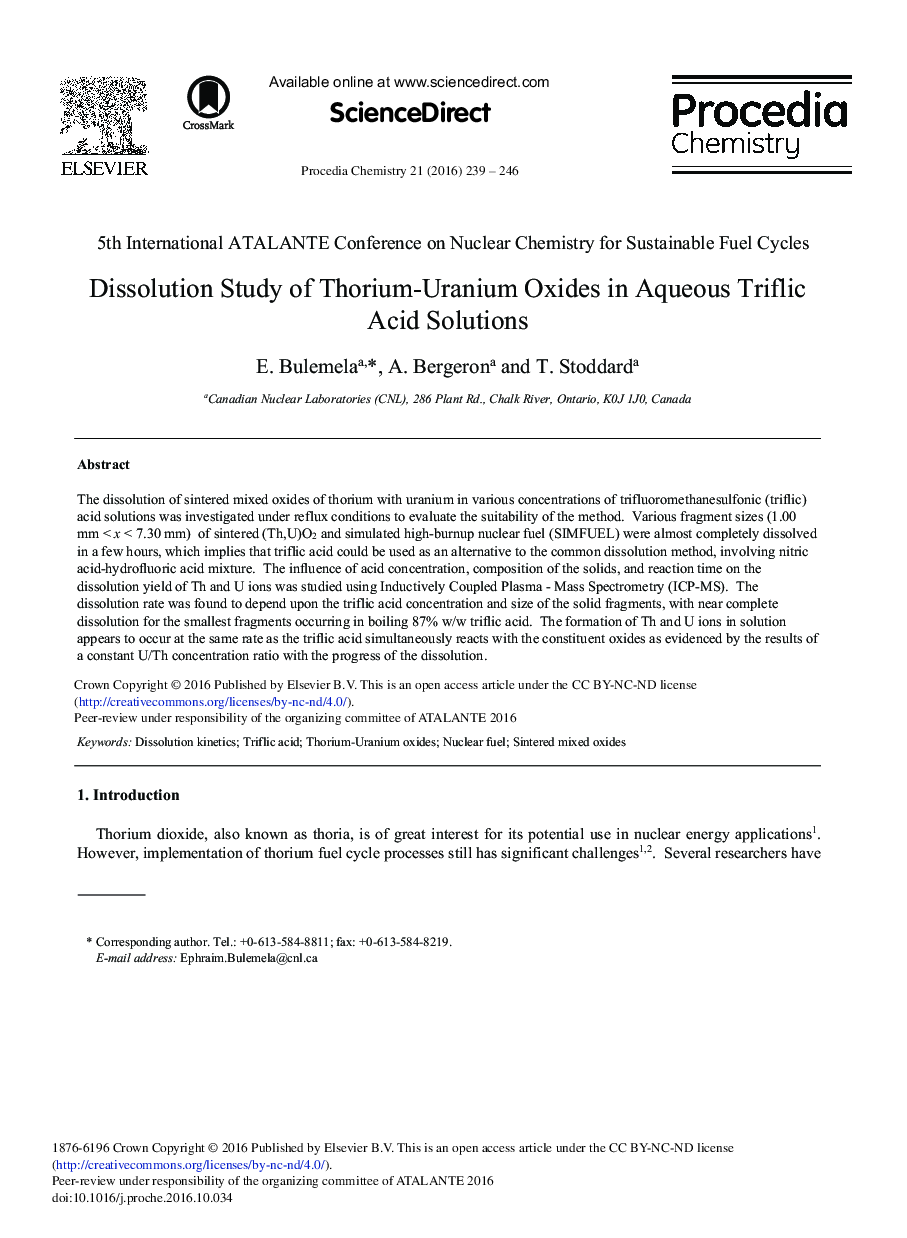| Article ID | Journal | Published Year | Pages | File Type |
|---|---|---|---|---|
| 4910935 | Procedia Chemistry | 2016 | 8 Pages |
Abstract
The dissolution of sintered mixed oxides of thorium with uranium in various concentrations of trifluoromethanesulfonic (triflic) acid solutions was investigated under reflux conditions to evaluate the suitability of the method. Various fragment sizes (1.00Â mm < x < 7.30Â mm) of sintered (Th,U)O2 and simulated high-burnup nuclear fuel (SIMFUEL) were almost completely dissolved in a few hours, which implies that triflic acid could be used as an alternative to the common dissolution method, involving nitric acid-hydrofluoric acid mixture. The influence of acid concentration, composition of the solids, and reaction time on the dissolution yield of Th and U ions was studied using Inductively Coupled Plasma - Mass Spectrometry (ICP-MS). The dissolution rate was found to depend upon the triflic acid concentration and size of the solid fragments, with near complete dissolution for the smallest fragments occurring in boiling 87% w/w triflic acid. The formation of Th and U ions in solution appears to occur at the same rate as the triflic acid simultaneously reacts with the constituent oxides as evidenced by the results of a constant U/Th concentration ratio with the progress of the dissolution.
Related Topics
Physical Sciences and Engineering
Chemical Engineering
Chemical Engineering (General)
Authors
E. Bulemela, A. Bergeron, T. Stoddard,
